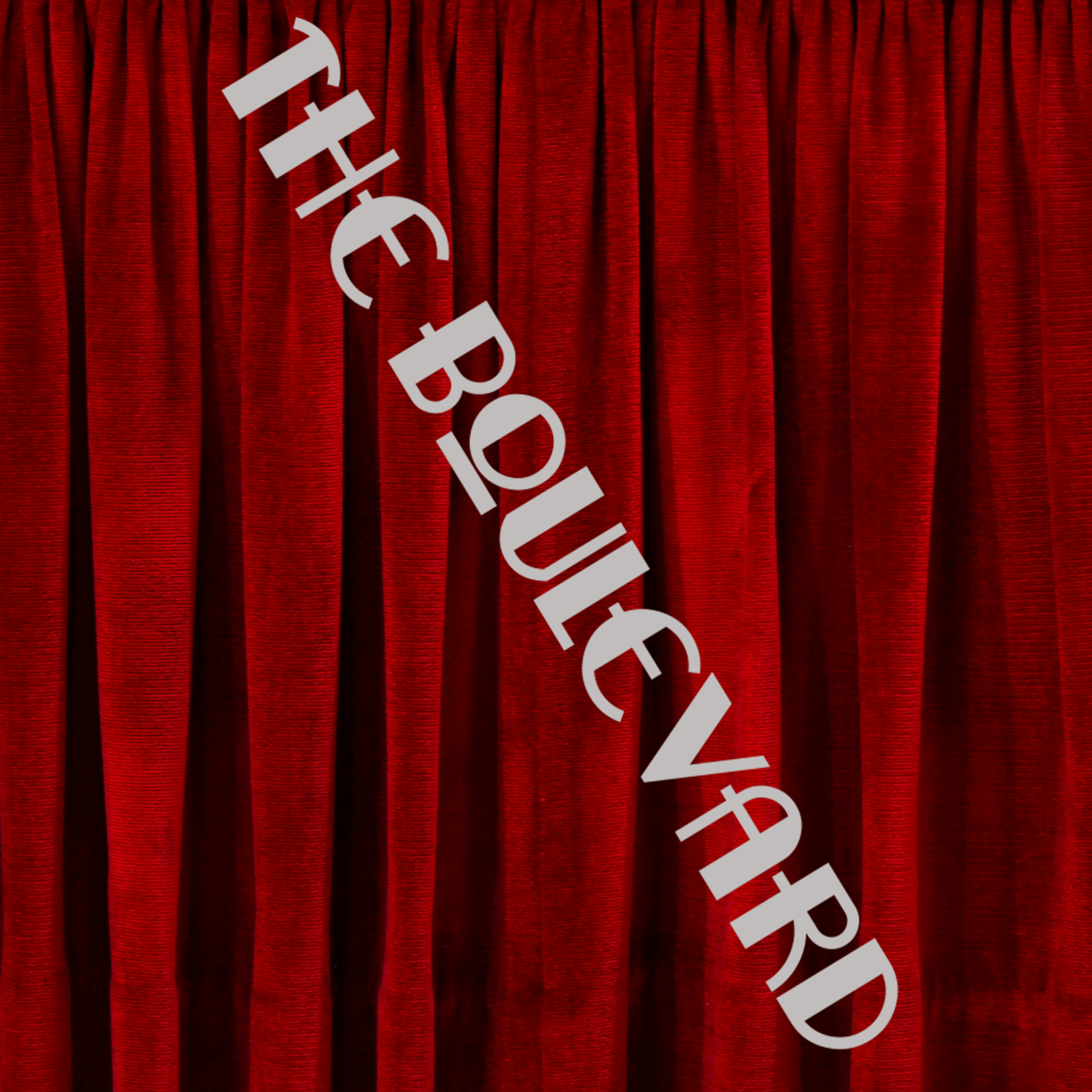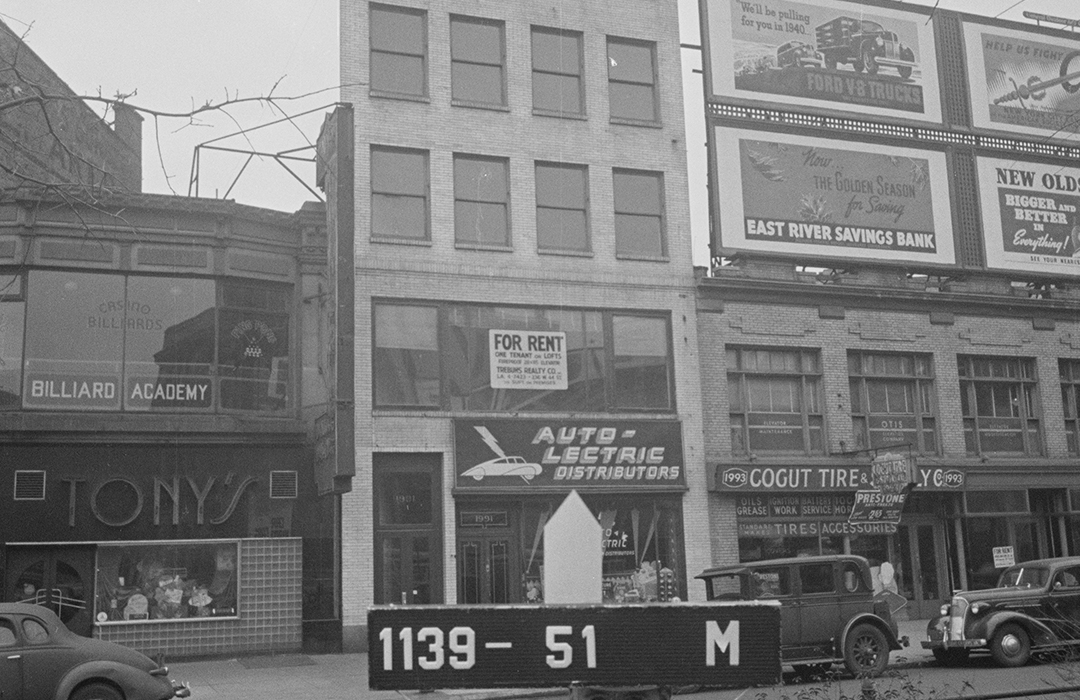
1991 Broadway
by Tom Miller
In 1894 D. J. Menton designed a one-story frame lumber shed for Mrs. Eliza J. Arkenburgh at 169 Western Boulevard. The wooden structure cost her $1,000 to construct. Twenty-four years later, on June 29, 1918, the Record & Guide reported that “people owning property in the vicinity” had formed the 1991 Broadway Company” and purchased Mrs. Arkenburgh’s shed and lot at what was now 1991 Broadway. The article mentioned that the plot was “probably the only one in that condition between 23d and 72d streets.”
The syndicate hired architect Frank Hausle to design a five-story store and loft building on the site. His plans for the “brick and concrete” structure placed the construction cost at $40,000 (about $809,000 in 2024). Hausle had recently patented a “fire-proof stairway,” and so his choice of non-flammable building materials is not surprising.
The building was completed within the year. Hausle’s no-nonsense Arts & Crafts design was nearly unadorned. A slightly projecting bandcourse and an intermediate cornice, both executed in brick, sandwiched the three-story midsection. Hausle added interest to the top floor by using slightly darker brick to shade the piers on either side of the widows and create faux panels above them.
The ground floor became home to the P. & J. Restaurant. Among the first of the upstairs tenants was the J. Alexander Mfg. Co., makers of “pleasure vehicle accessories.” Among its offerings was the Mirroscopes, which Automobile Trade Journal described as, “designed to show the driver if there be traffic in the rear when he intends to turn out.”
Shortly after moving in, J. Alexander Mfg. Co. advertised for office help. “Stenographer, Typist and Bookkeeper wanted; young man of intelligence and experience; must be speed, accurate and good penman.”
“This is my brother. I have arrested him and brought him here to be locked up.”
John Miller’s office was in the building in 1921. On August 3 that year, he and his three brothers, along with their wives, walked into the West 47th Street police station. Charles Miller “had a firm grip on the coat collar” of George Miller, said the New York Herald. He announced to the desk lieutenant, “This is my brother. I have arrested him and brought him here to be locked up.”
Charles explained that five months earlier, George had assaulted him, “and this afternoon I concluded to arrest him.” After he filled out a warrant, George was arrested. At that moment, John stepped forward and said, “I will bail him out,” and produced a diamond ring and diamond pin, which satisfied the lieutenant that they covered the bail. All four brothers and their wives then left the precinct station “in a very good humor.” The New York Herald said, “They will appear in the West Side court this morning, when the whole thing will come out and an anxious world will know why George assaulted Charles.”
At the time of the incident, Rutledge R. Mayo was serving in the U.S. Navy. The sailor had a special talent for electronics. On September 30, 1922, Radio World published a photograph of Mayo aboard a ship “with an Armstrong super-regenerative set which he built himself.” Following his discharge, he and his brother Roy A. Rutledge and Michael Blumberg leased a floor of 1991 Broadway for their Mayo Laboratories, Inc. Rutledge explained the firm would, “manufacture public address systems, radio parts, transformers, resistances, etc.”
Three months after moving in, Rutledge R. Mayo invented what Popular Science Monthly described in its December 1924 issue as “one of the most unusual of the new feats of radio construction.” The single device combined a long and short wave receiver. The article explained, “The same set of tubes is used for both sets and two different programs can be heard simply by throwing the change-over switches.”
Other tenants in 1925 were the Susanna Cocroft salon, and the Crown Coloring & Chemical Co. A Susanna Cocroft advertisement in The New York Times Magazine on November 22, 1925, said in part:
I have found a new way to remove fat—entirely unlike anything ever offered before, for it actually makes it fun to take off weight. You are helped to grow slender by playing a game—a snappy jolly, game that you will play for the sheer joy of it!
Like Rutledge R. Mayo, John F. Rider was an electronics guru. In 1929, he opened the Rider-Goll Radio School here, which taught “radio servicing by attendance and correspondence courses.” An advertisement in 1930 noted, “instruction in motion picture sound production. Movietone—Vitaphone—Photophone. Special courses for radio service men.”
That year, the school initiated a series of free lectures. The first, on October 31, 1930, was by C. E. Denton, who spoke on “Power Amplifiers for Public Address Systems; Design and Construction.”
Another electronics-related business was Matthew Ury’s electric supply contracting company. On March 14, 1939, the Daily Worker reported he had been fined “$1,500 by Federal Judge John C. Knox yesterday for having obliterated ‘Made in Germany’ marks on batteries he sold to the city.”
One of the floors became a meeting space known as Broadway Hall around 1940. On October 27, 1941, an announcement in the Columbia Spectator told of the organizational meeting of the America First Committee to be held that night. The ad urged, “Come and help keep America out of foreign wars.”
In the fall of 1966, the Marriage Museum opened here.
Broadway Hall quickly became a favorite of Irish-American groups. On January 4, 1931, the Irish-American Advocate noted that the Leitrim Association would hold its meetings “on the third Thursday of each month,” and the Derry Society would meet on the first Friday of every month. Other Irish groups that used the space were Division No. 12 of the Ancient Order of Hibernians of New York County, and the Delcassion Social and Athletic Club.
Tenants of 1991 Broadway during the 1950s included the Standard Watchmakers Institute, Inc., the New Folk-Song Guitar Club, and the Globe Parcel Service, Inc.
In the fall of 1966, the Marriage Museum opened here. Writing in Newsday on November 22, 1966, Diana Stern said, “Next time you feel abused by the man in your life, just take a trip to the Marriage Museum at 1991 Broadway and you’ll feel a lot better.” Stern’s visit to the exhibits that traced “the history of courtship, love and marriage customs around the world,” led her to believe “women have been a lot worse off in the past than they are today.” She concluded, “all in all the Marriage Museum, though a bit cluttered and disorganized in its cramped quarters, has a wealth of interesting material to offer.”
In 1973, the Musical Heritage Society had its offices here. The society published classical music recordings, which were available only by mail order.
A decade later, the blockfront was demolished to make way for the 27-story mixed use building designed by Kurt Resch for, somewhat ironically, the 1991 Broadway Corporation.
Tom Miller is a social historian and blogger at daytoninmanhattan.blogspot.com
BUILDING DATABASE
Keep Exploring
Be a part of history!
Think Local First to support the business at 1991 Broadway:
Meet Chief Vincent Dunn!



